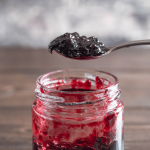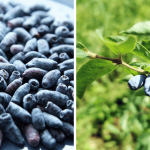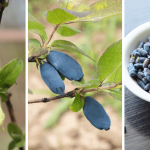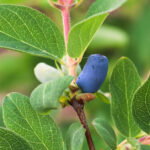Can Fly Honeysuckle (Haskap) Thrive in a Wet, USDA Zone 7 Climate
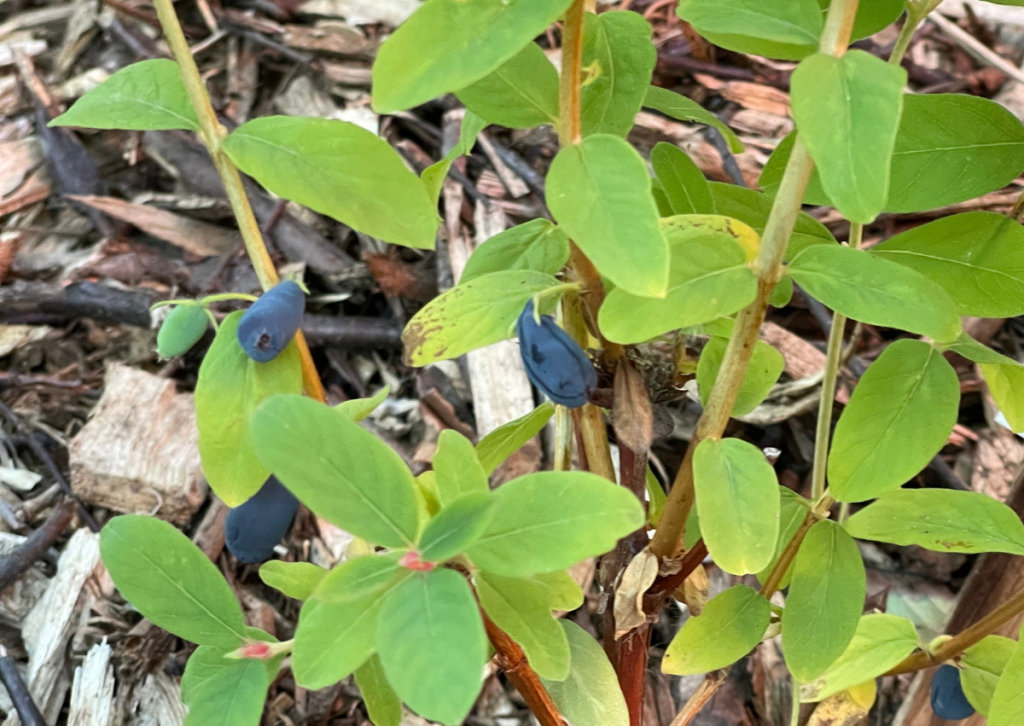
Fly honeysuckle (Lonicera caerulea) are native to the cool temperate Northern Hemisphere (North America, Europe, and Asia). The berries are a deep blue color and are oval in shape, but the shape, size, taste, color and bush dimensions can vary between variants. They are often used in jams, jellies, and pies. Haskap berries are also known for their health benefits.
They are known by many names including;
- Haskap
- Honeyberry
- Frostberry
- Blue honeysuckle
- Sweetberry honeysuckle
- Blue-berried honeysuckle
- Fly honeysuckle
Haskap, is derived from the name of the native Ainu people of Hokkaido, Japan.
These are my experiences with Haskaps, as I prefer to call them as that was the first name I came across and it sounds as unique as the plant is for me, in our wet Scandinavian zone 7 climate.
My experiences
I’ve bought seeds from two different sellers on eBay, and so far I’ve not been able to get them to germinate.
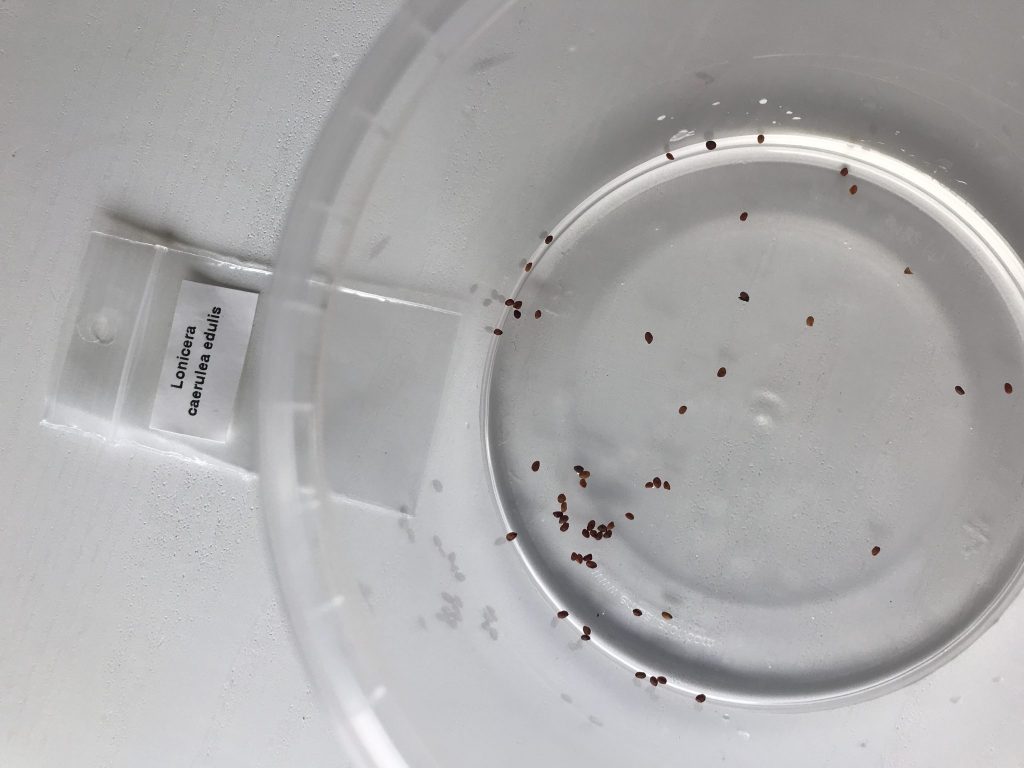
In the first attempt, I got 2 small zip bags with seeds, I put one of them into cold storage for next season and the other I opened and let the seeds soak for 24 hours.
The year after (early 2021) I did the same, but also direct seeded some outside in late fall. A few weeks later I found some plants for sale in a garden center.
My Cultivated Varieties of Haskaps
2021 Bought 2 identical in a store – named “Wojtek”
These grew to a much larger bush than I had anticipated. It seems like they really thrived in the soil in front of a raised Hugelkultur bed and my heavy woodchips soil.
Early spring 2021. Gave me a few last seasons. They were a bit bitter at first, but waited about a month after they looked ready and the taste was sweeter. I learned the hard way that they look ready to eat way before they actually are. At least that goes for my “Wojtek” variant.
I got some new variants in 2022
This is the information I have about my new variants. I have planted them somewhat randomly around our property, so they hopefully can pollinate well, but most importantly is to increase their chance of survival the first winter. When they’ve grown for 2 years I’ll try to layer them so I can get more of them and put them near to each other in the fashion the seller told me to..
I managed to propagate my “Wojtek” variants by layering. Read more about how to propagate Haskaps here.
Polarbear, originally from Russia, large yield, fruit is approximately 1.33in x 0.6in (3.4cm x 1.5cm)
Kalinka, originally from Russia, large yield, fruit is approximately 1in x 0.6in (2.5cm x 1.5cm)
Myberry Bee, top pollinator for all varieties, originally from Canada, fruit is 1.1in (3cm)
Myberry Sweet top pollinator for all varieties, originally from Canada, fruit is 2.5cm and 1.6g, top taste!!
Blue Velvet, originally from the USA
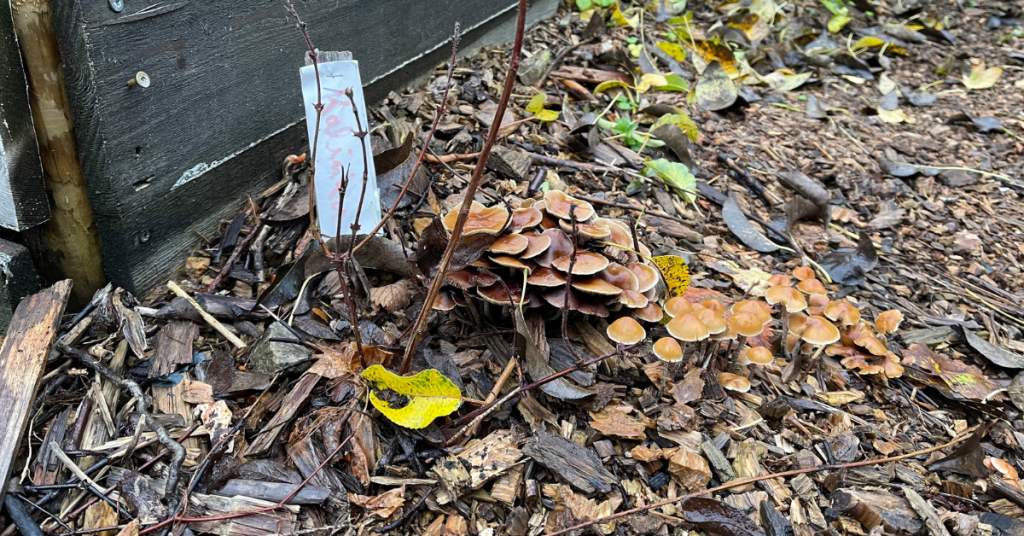
I will be closely monitoring (and updating this article) the progress of the cultivated Haskap variants that we have planted on our property. As these plants experience their first winter, it will be interesting to see how well they handle our climate and any potential adverse weather conditions. In addition to monitoring their overall health and growth, I will also be paying close attention to the taste and quality of the berries produced by these plants. By keeping track of these factors, I hope to gain a better understanding of the potential of these Haskap variants in our specific climate and soil conditions. I will regularly update this information to share with others who may be interested in cultivating Haskap plants themselves.
Apart from eating the Haskaps fresh what use is there for them?
We haven’t had a large enough harvest of Haskaps to process them, but we have plans as they seem to thrive in our climate and on our property in addition I’ve made sure we’ll have a lot more in the near future.
There seem to be many ways to use Haskap berries beyond just eating them fresh. Some common uses for these berries include:
- Jams and jellies: Haskap berries can be used to make sweet spreads like jams and jellies. These spreads can be used on toast, sandwiches, and other baked goods.
- Pastries: Haskap berries can be incorporated into a variety of pastries, including pies, tarts, and scones.
- Wine: Haskap berries can be used to make wine, which can be enjoyed on its own or used in cocktails.
- Juices: Haskap berries can be used to make refreshing juices that are rich in flavor and nutrients.
- Yogurt: Haskap berries can be mixed into yogurt to create a tasty and healthy snack.
- Sauces: Haskap berries can be used to make sweet and savory sauces that can be served over meats, vegetables, and other dishes.
- Candy: Haskap berries can be used to make sweet treats like candies and lollipops.
- Ice cream: Haskap berries can be used to make delicious and refreshing ice cream flavors.
Overall, there are many ways to use Haskap berries in the kitchen, and they can add a unique and flavorful touch to various dishes.
Identify Haskap Plants by Their Hydrophobic Leaves When It Rains
One interesting characteristic of Haskap plants is that their leaves are hydrophobic, or water repellent. This means that water droplets bead up and roll off the surface of the leaves rather than being absorbed or sticking to them. This property is known as the “lotus effect,” and it is often seen in plants that grow in wet or humid environments.
The hydrophobic nature of Haskap leaves is thought to have evolved as a way to protect the plants from fungal infections and other waterborne diseases. By repelling water, the leaves are less likely to become infected or damaged by waterborne pathogens. Additionally, the hydrophobic surface of the leaves may help to prevent excess moisture from accumulating on the plants, which can also be harmful to their health.
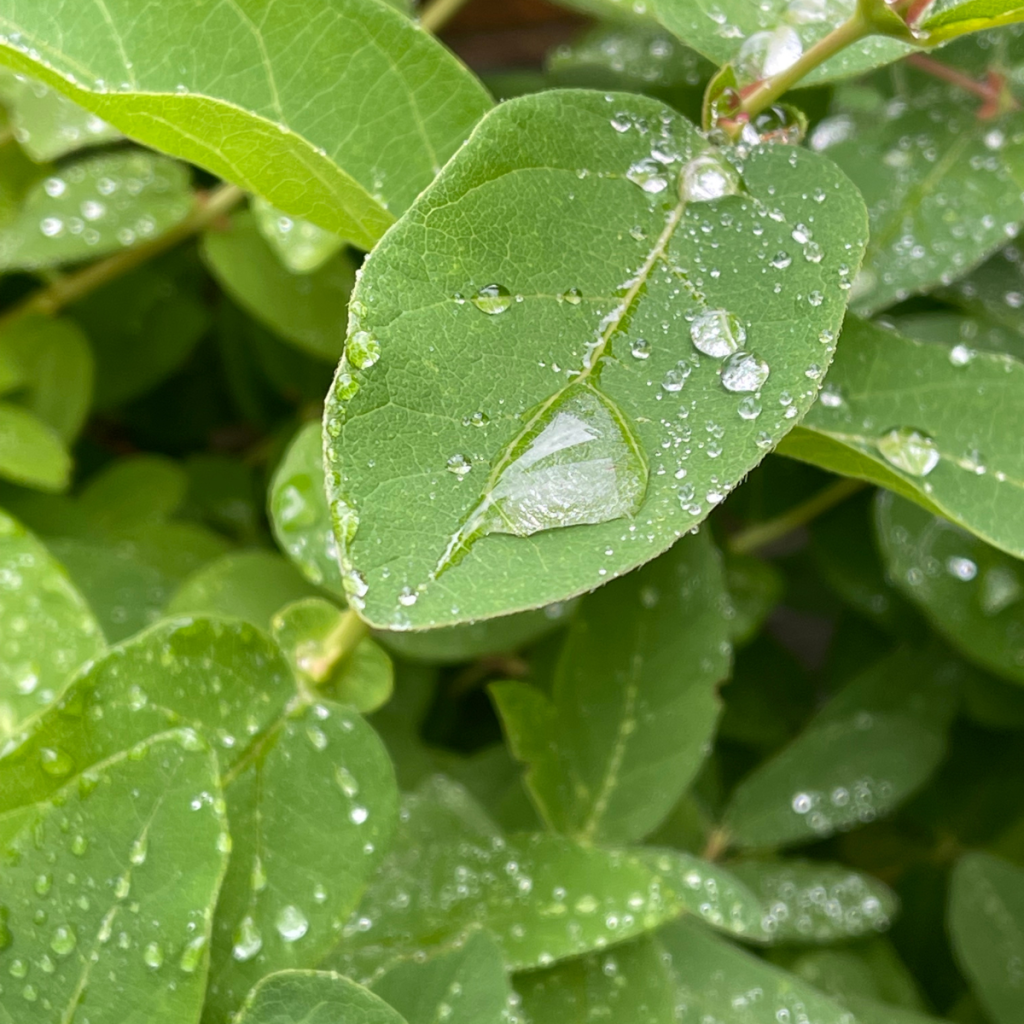
The hydrophobic nature of Haskap leaves can also have practical applications. For example, the leaves can be used to create non-stick surfaces or to repel water from clothing or other materials. The leaves can also be used as a natural water repellent for plants and gardens, helping to keep them healthy and free from excess moisture. Overall, the hydrophobic properties of Haskap leaves makes them a unique and interesting plant with many potential uses.
Add Some Pizzazz to Your Meal with These Haskap Berry Recipes
Haskap Jam
Haskap jam is a delicious and easy way to enjoy the unique flavor of Haskap berries. It can be used as a spread on toast, sandwiches, and other baked goods, or as a topping for ice cream, pancakes, and other desserts. It is also a great way to use up excess Haskap berries if you have a bumper crop.
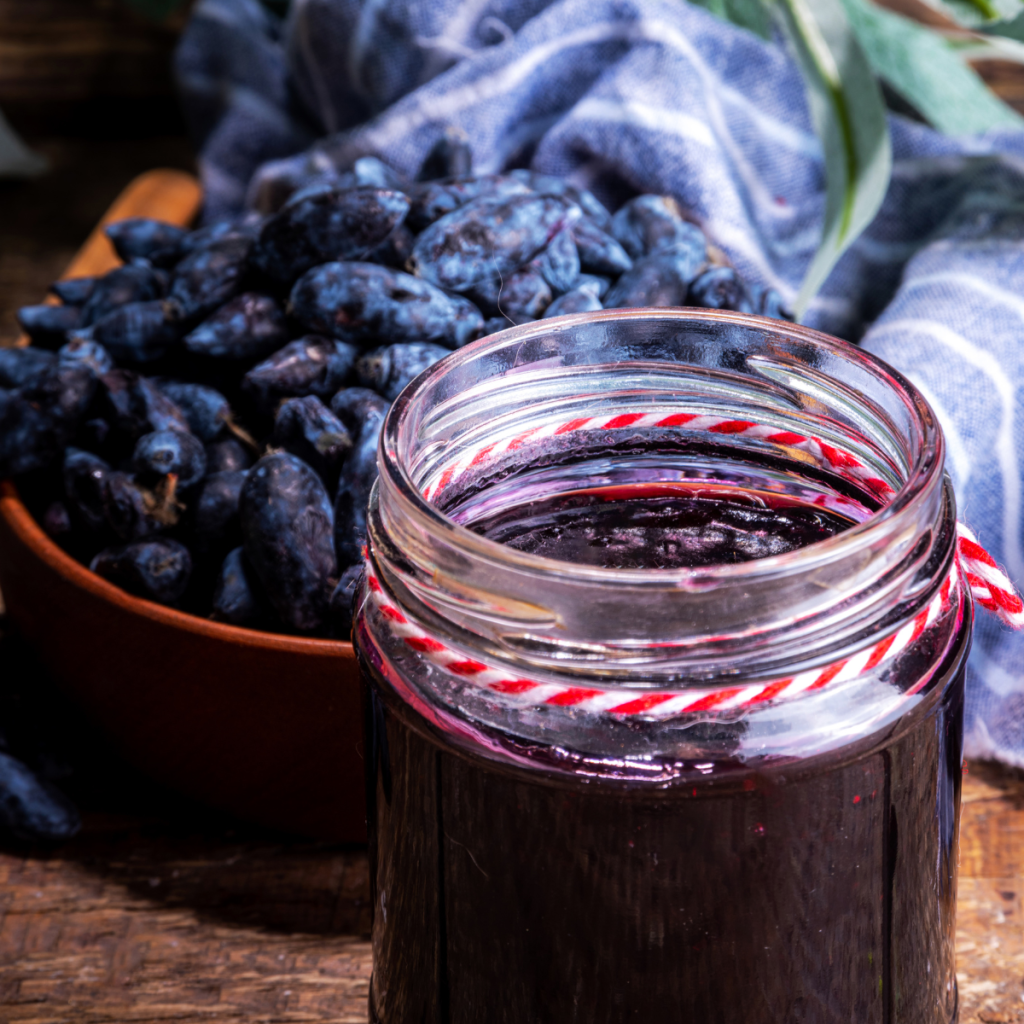
Ingredients:
- 2 cups Haskap berries
- 1 cup granulated sugar
- 2 tablespoons lemon juice
- 1/4 cup water
- 1/4 cup pectin
Method:
Wash and crush the Haskap berries. You can use a potato masher or pulse them in a food processor until they are broken down into small pieces.
In a medium saucepan, combine the crushed Haskap berries, sugar, lemon juice, and water. Bring to a boil over medium heat, stirring constantly.
Reduce the heat to low and add the pectin, stirring until it is fully dissolved.
Bring the mixture back to a boil, then reduce the heat and simmer for 5-10 minutes, or until the jam has thickened to your desired consistency.
Remove the pan from the heat and let the jam cool for a few minutes.
Pour the jam into a jar or other container and let it cool completely. Once it is cool, you can seal the jar and store it in the refrigerator for up to 2 weeks. Enjoy your homemade Haskap jam on toast, sandwiches, or any other way you like!
Haskap Pie (example of Pastry)
Haskap pie is a delicious and fruity dessert that showcases the unique flavor of Haskap berries. It is perfect for summer gatherings or any time you want to enjoy a sweet and satisfying treat. The creamy filling and flaky crust make it a satisfying dessert that is sure to impress your friends and family.

Ingredients:
- 2 cups Haskap berries
- 1/2 cup granulated sugar
- 3 tablespoons cornstarch
- 1/4 teaspoon salt
- 2 tablespoons butter
- 1 pie crust (homemade or store-bought)
- Egg wash (1 egg beaten with 1 tablespoon water)
Method:
Preheat your oven to 400°F (200°C).
In a medium saucepan, combine the Haskap berries, sugar, cornstarch, and salt. Cook over medium heat, stirring constantly until the mixture comes to a boil and thickens.
Remove the pan from the heat and stir in the butter until it is fully melted. Set the filling aside to cool.
Roll out the pie crust and press it into a pie dish. Trim the edges and flute the edges if desired.
Pour the Haskap filling into the pie crust and smooth the top.
Brush the top of the pie with the egg wash to help it brown nicely.
Bake the pie for 30-35 minutes, or until the crust is golden brown and the filling is bubbly.
Remove the pie from the oven and let it cool for at least 15 minutes before slicing and serving. Enjoy your Haskap pie with a dollop of whipped cream or a scoop of ice cream, if desired.
Haskap Wine
Haskap wine is a delicious and unique beverage that showcases the rich and fruity flavor of Haskap berries. It is a perfect choice for a special occasion or for enjoying with friends and family. Making your own wine at home can also be a fun and rewarding hobby, allowing you to experiment with different flavors and techniques.
Ingredients:
- 2 quarts Haskap berries
- 1 gallon water
- 5 pounds granulated sugar
- 1 package wine yeast
- 1 Campden tablet (optional)
Method:
Wash the Haskap berries and remove any stems or leaves.
Place the berries in a large pot or fermenting vessel and crush them with a potato masher or similar tool.
Add the water and bring the mixture to a boil. Reduce the heat and simmer for 20 minutes.
Strain the mixture through a fine mesh strainer or cheesecloth to remove the solids.
Return the liquid to the pot or fermenting vessel and add the sugar. Stir until the sugar is fully dissolved.
Allow the mixture to cool to room temperature, then add the wine yeast and Campden tablet (if using). Stir to combine.
Cover the fermenting vessel with a cloth or lid and allow the mixture to ferment for 7-10 days.
Strain the fermented liquid through a cheesecloth or fine mesh strainer to remove any solids.
Pour the wine into a clean bottle or jug and seal it with a cork or cap.
Allow the wine to age for at least 3 months before enjoying it. The longer you age the wine, the smoother and more complex it will become. Enjoy your homemade Haskap wine as a special treat or serve it at a party or gathering.
Haskap Juice
Haskap juice is a delicious and refreshing way to enjoy the unique flavor of Haskap berries. It is a great source of vitamins and nutrients and can be enjoyed as a breakfast drink or as a thirst-quenching snack. By making your own juice at home, you have the ability to choose the ingredients and adjust the sweetness to your liking, as well as experiment with different flavor combinations to suit your taste.
Ingredients:
- 2 cups Haskap berries
- 1 cup water
- 1/4 cup granulated sugar (optional)
- 1/4 cup lemon juice (optional)
Method:
Wash the Haskap berries and remove any stems or leaves.
Place the berries in a blender or food processor and pulse until they are broken down into a smooth puree.
Strain the puree through a fine mesh strainer or cheesecloth to remove any seeds or solids.
Pour the strained puree into a saucepan and add the water, sugar, and lemon juice (if using). Stir to combine.
Bring the mixture to a boil over medium heat, then reduce the heat and simmer for 5-10 minutes.
Remove the pan from the heat and let the juice cool for a few minutes.
Pour the juice into a jar or other container and let it cool completely. Once it is cool, you can seal the jar and store it in the refrigerator for up to 1 week. Enjoy your homemade Haskap juice chilled or over ice as a refreshing and nourishing drink. You can also experiment with adding other ingredients, such as ginger or mint, to create unique and flavorful variations.
Haskap Yogurt
Haskap yogurt is a delicious and healthy way to enjoy the unique flavor of Haskap berries. It is an excellent source of protein, calcium, and other essential nutrients, and it can be enjoyed as a breakfast, snack, or dessert.
When you make your own yogurt at home, you have complete control over the ingredients and sweetness of the final product. This allows you to tailor the yogurt to your taste preferences and dietary needs. Additionally, making your own yogurt gives you the opportunity to experiment with different flavor combinations, whether you prefer sweet and fruity or savory and tangy. With the ability to control the ingredients and sweetness, homemade yogurt can be a healthier and more enjoyable alternative to store-bought varieties. Plus, it can be a fun and rewarding hobby to try out new flavor combinations and techniques.
Ingredients:
- 1-quart milk
- 2 tablespoons plain yogurt (with live active cultures)
- 1 cup Haskap berries
- 1/4 cup granulated sugar (optional)
Method:
Pour the milk into a large saucepan and heat it over medium heat until it reaches a temperature of 180°F (80°C).
Remove the pan from the heat and allow the milk to cool to a temperature of 110-115°F (43-46°C).
Stir in the plain yogurt to introduce the live active cultures.
Pour the mixture into a jar or other container and seal it with a lid.
Place the jar in a warm location (such as an oven with the light turned on, or a warming drawer) and allow it to incubate for 6-8 hours.
After the incubation period, the mixture should have thickened into yogurt. If it is not thick enough, you can incubate it for a few more hours.
Wash the Haskap berries and remove any stems or leaves.
Place the berries in a blender or food processor and pulse until they are broken down into a smooth puree.
Strain the puree through a fine mesh strainer or cheesecloth to remove any seeds or solids.
Stir the Haskap puree and sugar (if using) into the yogurt. Mix well to combine.
Pour the Haskap yogurt into a jar or other container and seal it with a lid.
Store the yogurt in the refrigerator until you are ready to enjoy it. It will keep for up to 1 week. Enjoy your homemade Haskap yogurt as a healthy and flavorful snack or breakfast. You can also add it to smoothies or use it as a topping for oatmeal or other dishes.
Haskap Sauce
Haskap sauce is a delicious and versatile condiment that showcases the unique flavor of Haskap berries. It can be used as a topping for meats, vegetables, and other dishes, or as a dip for appetizers and snacks.
By making your own Haskap sauce at home, you have the ability to customize the ingredients and sweetness to your liking, as well as experiment with different flavor combinations to suit your taste. This is not something that you can easily find at a store, so making your own sauce allows you to enjoy a unique and flavorful condiment that is tailored to your preferences. Additionally, the process of making your own sauce can be enjoyable and rewarding, as you have complete control over the final product. Whether you prefer a sweet and fruity sauce or a savory and tangy one, the possibilities are endless when you make your own Haskap sauce at home.
Ingredients:
- 2 cups Haskap berries
- 1/2 cup granulated sugar
- 1/4 cup water
- 2 tablespoons cornstarch
- 1 tablespoon lemon juice
- 1/4 teaspoon salt
Method:
Wash the Haskap berries and remove any stems or leaves.
Place the berries in a blender or food processor and pulse until they are broken down into a smooth puree.
Strain the puree through a fine mesh strainer or cheesecloth to remove any seeds or solids.
In a medium saucepan, combine the Haskap puree, sugar, water, cornstarch, lemon juice, and salt. Bring to a boil over medium heat, stirring constantly.
Reduce the heat to low and simmer for 5-10 minutes, or until the sauce has thickened to your desired consistency.
Remove the pan from the heat and let the sauce cool for a few minutes.
Pour the sauce into a jar or other container and let it cool completely. Once it is cool, you can seal the jar and store it in the refrigerator for up to 1 week. Enjoy your homemade Haskap sauce as a topping for meats, vegetables, or other dishes, or as a dip for appetizers and snacks. You can also experiment with adding other ingredients, such as spices or herbs, to create unique and flavorful variations.
Haskap Candy
Haskap candy is a delicious and sweet treat that showcases the unique flavor of Haskap berries. It is a fun and easy way to enjoy these flavorful berries, and it is a great option for a special occasion or as a gift.
This can be a fun and rewarding hobby, but it can also save you money by not having to purchase store-bought candy. Additionally, making your own candy allows you to control the quality and quantity of ingredients, making it a potentially healthier and more satisfying treat.
Ingredients:
- 2 cups Haskap berries
- 2 cups granulated sugar
- 1/2 cup corn syrup
- 1/2 cup water
- 1/4 teaspoon lemon juice
- Food coloring (optional)
Method:
Wash the Haskap berries and remove any stems or leaves.
Place the berries in a blender or food processor and pulse until they are broken down into a smooth puree.
Strain the puree through a fine mesh strainer or cheesecloth to remove any seeds or solids.
In a medium saucepan, combine the Haskap puree, sugar, corn syrup, water, and lemon juice. Bring to a boil over medium heat, stirring constantly.
Reduce the heat to low and simmer for 5-10 minutes, or until the mixture reaches a temperature of 300°F (150°C) on a candy thermometer.
Remove the pan from the heat
Haskap Ice Cream
Haskap ice cream is a delicious and refreshing way to enjoy the unique flavor of Haskap berries. It is a perfect treat for summertime or any time you want to indulge in a creamy and fruity dessert.
As a concerned parent, I want to make sure that my family is consuming healthy and safe products. By making our own ice cream at home, we can control the ingredients and sweetness level, ensuring that we are not consuming any harmful additives or excess sugar. Additionally, we can experiment with different flavor combinations to suit our taste, making it a fun and enjoyable activity for the whole family. Making our own ice cream allows us to have complete control over what goes into our bodies, making it a healthier and more satisfying choice.
Ingredients:
- 2 cups Haskap berries
- 1 cup milk
- 1 cup heavy cream
- 3/4 cup granulated sugar
- 1 teaspoon vanilla extract
- Pinch of salt
Method:
Wash the Haskap berries and remove any stems or leaves.
Place the berries in a blender or food processor and pulse until they are broken down into a smooth puree.
Strain the puree through a fine mesh strainer or cheesecloth to remove any seeds or solids.
In a medium saucepan, combine the Haskap puree, milk, cream, sugar, vanilla extract, and salt. Bring to a boil over medium heat, stirring constantly.
Reduce the heat to low and simmer for 5-10 minutes, or until the mixture is well combined and the sugar is fully dissolved.
Remove the pan from the heat and let the mixture cool for a few minutes.
Pour the mixture into a container and seal it with a lid.
Place the container in the freezer and allow it to freeze for at least 4 hours, or until it is firm.
Once the ice cream is frozen, scoop it into bowls or cones and enjoy it as a refreshing and flavorful treat. You can also add other ingredients, such as chocolate chips or chopped nuts, to create unique and tasty variations.
Discover the Superfood Benefits of Haskap Berries
Curious about how haskap berries can elevate your garden and health? Our comprehensive guide on this remarkable superfood reveals everything you need to know—from its unique flavor profile to its myriad health benefits. Dive deeper into the world of haskap and discover why these berries are becoming a staple in gardens across diverse climates. Explore our detailed guide on haskap berries here and learn how to incorporate them into your sustainable gardening practice today!

